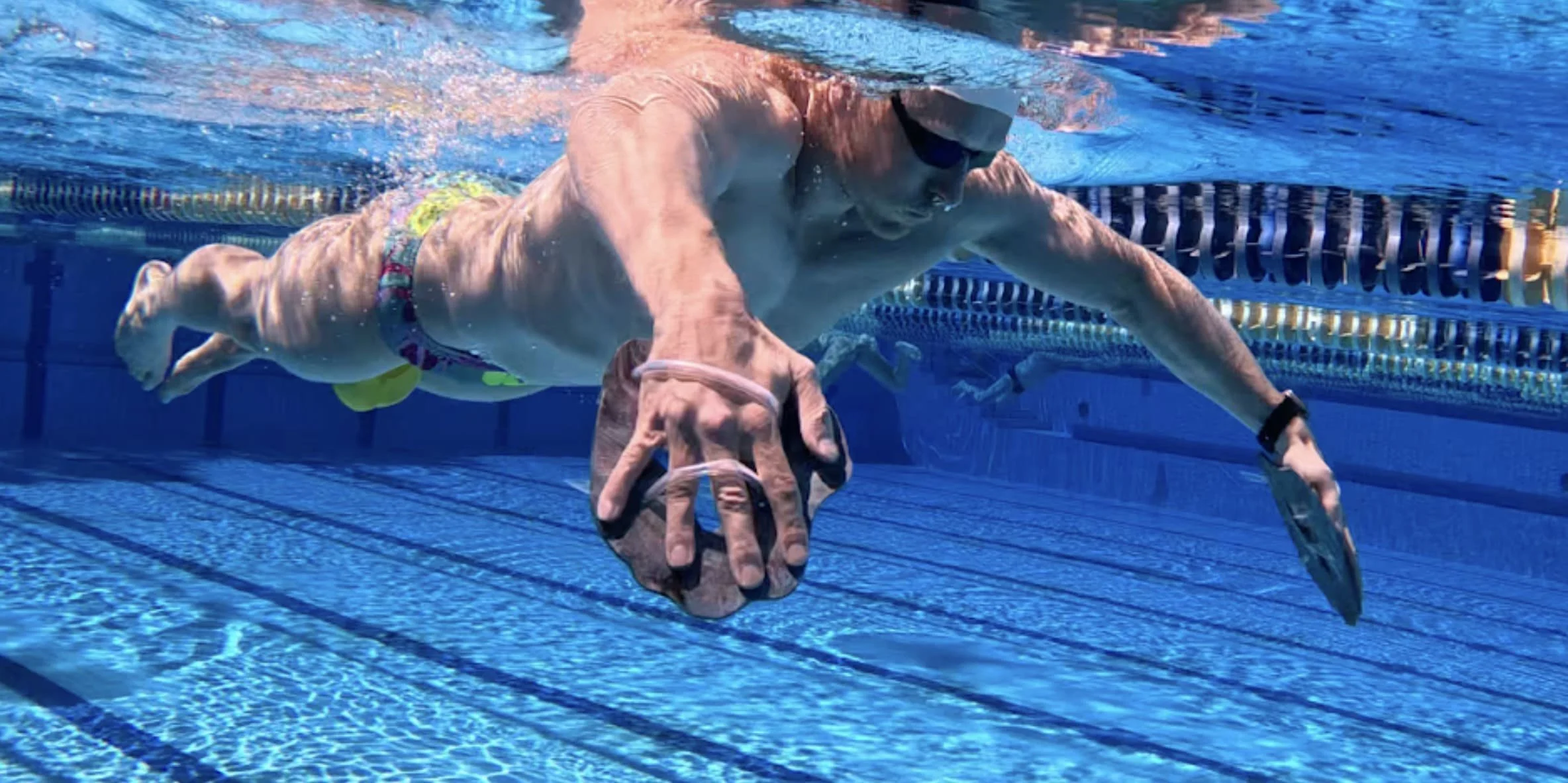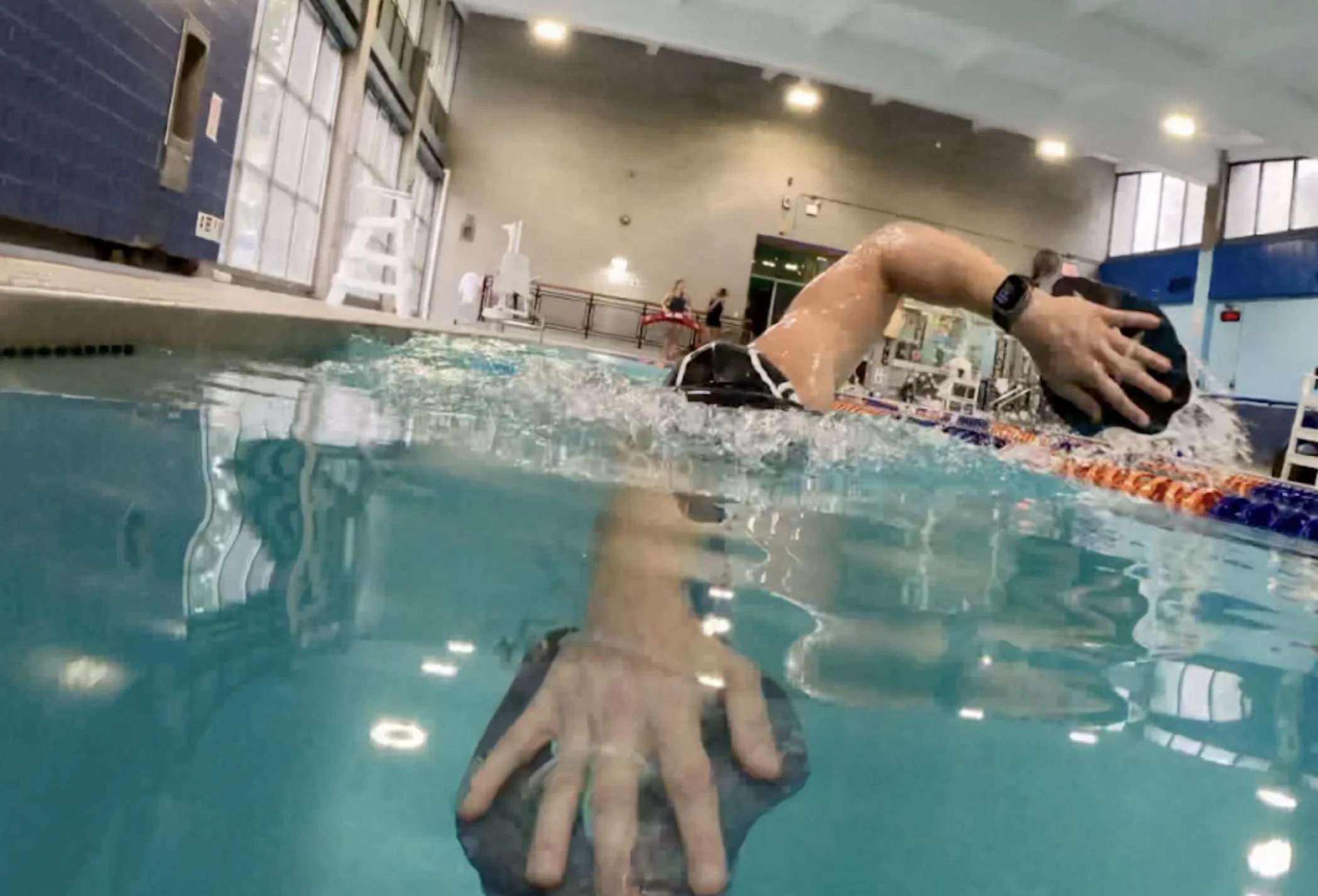Best Swim Paddles for Training and Technique
/Walk onto any pool deck and you’ll notice the same lineup: fins hanging off lane lines, snorkels resting at the end of the pool, and paddles tucked into mesh gear bags. Swim paddles are one of the most common training tools for competitive swimmers — but they’re also one of the most misunderstood.
Some athletes swear by them for building power. Others avoid them, worried about shoulder pain. The truth lies somewhere in between. Used correctly, swim paddles can sharpen your technique, develop strength, and improve efficiency in the water. Used carelessly, they magnify poor mechanics and increase the risk of injury.
I’ve coached swimmers who found new levels of power and feel for the water once they mastered paddle training. I’ve also coached swimmers who pushed too much resistance, too soon, and ended up sidelined. In this guide, we’ll explore the best swim paddles for training and technique, how to use them safely, and how to make them a smart addition to your swim bag.
The Real Benefits of Swim Paddles
Swim paddles (also called hand paddles or swimming hand paddles) increase the surface area of your hand, making every pull more challenging. With more water resistance, your muscles — shoulders, chest, back, triceps, and core — work harder each stroke.
The benefits are clear:
Strength Development – Think of paddles as resistance training built into your swim. Every stroke becomes a mini strength session.
Technique Awareness – Paddles don’t forgive sloppy strokes. If your catch slips or your hand enters awkwardly, you’ll feel it instantly. It can also amplify and reinforce good technique.
Stroke-Specific Application – While freestyle benefits most, paddles can also be used for backstroke, butterfly drills, and even modified breaststroke training.
But here’s the rule I remind swimmers of daily: paddles amplify everything. If your stroke mechanics are strong, paddles reinforce good habits. If your stroke is inconsistent, paddles can reinforce poor movement patterns or overload the shoulders.
Related: 5 Swim Bag Essentials — paddles deserve a spot in every serious swimmer’s gear bag.
Types of Swim Paddles
With so many designs on the market, it helps to understand what each type of paddle is best suited for:
1. Classic Hand Paddles
Flat, plastic paddles available in small, medium, and large sizes. These are the best swim paddles for most swimmers because they’re simple, versatile, and effective for building pulling strength.
2. Finger Paddles
Cover just the fingers, leaving part of the hand exposed. These are excellent for developing a delicate “feel for the water” without overwhelming the shoulders. Great for drills and younger swimmers.
3. Technique Paddles (like Finis Agility Paddles)
This strapless design rewards a square entry and strong hold for the water. Flaws in your entry or deviations from pulling straight back can cause the paddle to slip off, providing instant feedback.
4. Specialty Swim Paddles
Specialty paddles like the Hungarian anti-paddle or turtle, have a convex shape, improving streamline on the entry, but reducing surface area of the hand, increasing the swimmers reliance on using a vertical forearm as a paddle.
How to Use Swim Paddles Safely
Before adding paddles to your main sets, keep these coaching guidelines in mind:
Pick the Right Size – Start small. Paddles only slightly larger than your hand will give you resistance without overloading the shoulders. Oversized paddles are a fast track to injury, and slow stroke rates
Moderate the Volume – Don’t swim half your practice with paddles. A few targeted sets each session is enough.
Pair With Technique Drills – Use paddles for sculling, single-arm drills, and controlled aerobic swimming.
Listen to Your Shoulders – Discomfort is feedback. Pain is a stop sign.
Use them Strategically - paddles are like chainrings on a bike - a smaller paddle will improve feel for the water, provide increased force and load on the muscles, but still allow you to maintain a high stroke rate. Large paddles further increase stroke force and distance per stroke, but may also lower stroke rate.
If you’re not sure your mechanics are ready, get a professional set of eyes on your stroke. A video technique analysis can highlight whether paddles will help or hurt your development.
Best Swim Paddles for Training and Technique
Here’s how I categorize the “best” swim paddles for swimmers at different stages:
Best Overall: Medium-sized classic hand paddles — versatile and effective for most levels.
Best for Technique: Finger paddles or strapless technique paddles — promote proper hand position and catch awareness.
Best for Power: Larger paddles with surface holes — ideal for short, controlled strength sets focused on distance per stroke and force production.
Finger Paddles
Finger paddles are a great option for beginners and intermediates because they boost feel for the water without overloading the shoulders. Their smaller surface area lets you refine the catch and early forearm engagement while keeping stroke tempo natural and safe. If you want a gentle but effective way to sharpen technique, finger paddles are an easy win.
Anti-Paddle Freestyle
Anti-paddles encourage greater vertical forearm paddles, hold, and feel for the water.
Anti-paddle freestyle to sharpen feel for the water
How to Add Paddles Into Your Training Plan
The smartest way to use paddles is with a purpose — not just grabbing them every time you want to swim fast. Here’s how to structure them based on goals:
For Technique
Finger paddles during drill sets.
Sculling with strapless paddles in warm-up.
Short aerobic sets to refine catch efficiency.
For Strength
25s and 50s at race pace with medium-to-large paddles.
Pair with pull buoy or parachute for added resistance.
Short rest intervals to build pulling endurance. Longer rest periods to build strength.
For Balanced Training
Cycle paddle work into 2–3 practices per week.
Mix technique-focused and strength-focused paddle sets.
Support with dryland programs to reinforce upper-body strength.
Need structure? Check out our swim programs or join the monthly subscription training for a full plan that integrates pool work with dryland progressions.
Common Mistakes to Avoid
Even with the right paddles, swimmers often fall into the same traps:
Going Too Big, Too Soon – The shoulder joint isn’t built to handle oversized paddles right away.
Overusing Paddles – Paddles are a supplement, not a replacement for clean swimming.
Forcing Poor Mechanics – Don’t let paddles “hide” flaws in technique. Use them to expose and correct them.
Remember, the paddle is a magnifying glass — it shows you where you’re strong and where you need work.
Final Takeaway
Swim paddles are a simple tool that can transform your training when used wisely. They build power, sharpen your feel for the water, and give immediate feedback on technique. But they’re not a shortcut. Paddles work best when you already have solid stroke fundamentals — excellence lives in those basics.
Start small, focus on form, and add paddle sets with intention. Whether you’re chasing sprint power or distance efficiency, the right paddle work will help you become a stronger, smarter swimmer.
Also see: Swim Lane Etiquette for Lap Swimmers — because good training tools don’t replace good pool habits.
Bonus: Exclusive Discounts for Swimmers — gear up for less and save on training essentials.
About the Author
I’m Dan Daly, a swim coach and dryland specialist with over 20 years of experience helping swimmers break through performance plateaus. My Train Daly system blends strength, technique, and recovery into sustainable progress — whether you’re a high school swimmer, a masters athlete, or chasing national-level goals.
Frequently Asked Questions About Swim Paddles
Are swim paddles good for training?
Yes. Swim paddles add resistance to each stroke, helping you build upper-body strength and improve stroke efficiency. They’re best used in moderation and paired with solid technique.
What size swim paddles should I use?
Start with paddles only slightly larger than your hand. Oversized paddles may increase shoulder stress. As your strength and technique improve, you can gradually try larger sizes for power sets.
Which are the best swim paddles for beginners?
Finger paddles or small strapless paddles are best for beginners. They help reinforce proper hand entry and catch without putting too much strain on the shoulders.
Can swim paddles cause injury?
Yes, if used incorrectly. Overusing paddles, choosing paddles that are too large, or swimming with poor technique can all lead to shoulder problems. Always prioritize form before resistance.
-
Yes. Swim paddles add resistance to each stroke, helping you build upper-body strength and improve stroke efficiency. They’re best used in moderation and paired with solid technique.
-
Start with paddles only slightly larger than your hand. Oversized paddles may increase shoulder stress. As your strength and technique improve, you can gradually try larger sizes for power sets.
-
Finger paddles or small strapless paddles are best for beginners. They help reinforce proper hand entry and catch without putting too much strain on the shoulders.
-
Yes, if used incorrectly. Overusing paddles, choosing paddles that are too large, or swimming with poor technique can all lead to shoulder problems. Always prioritize form before resistance.










